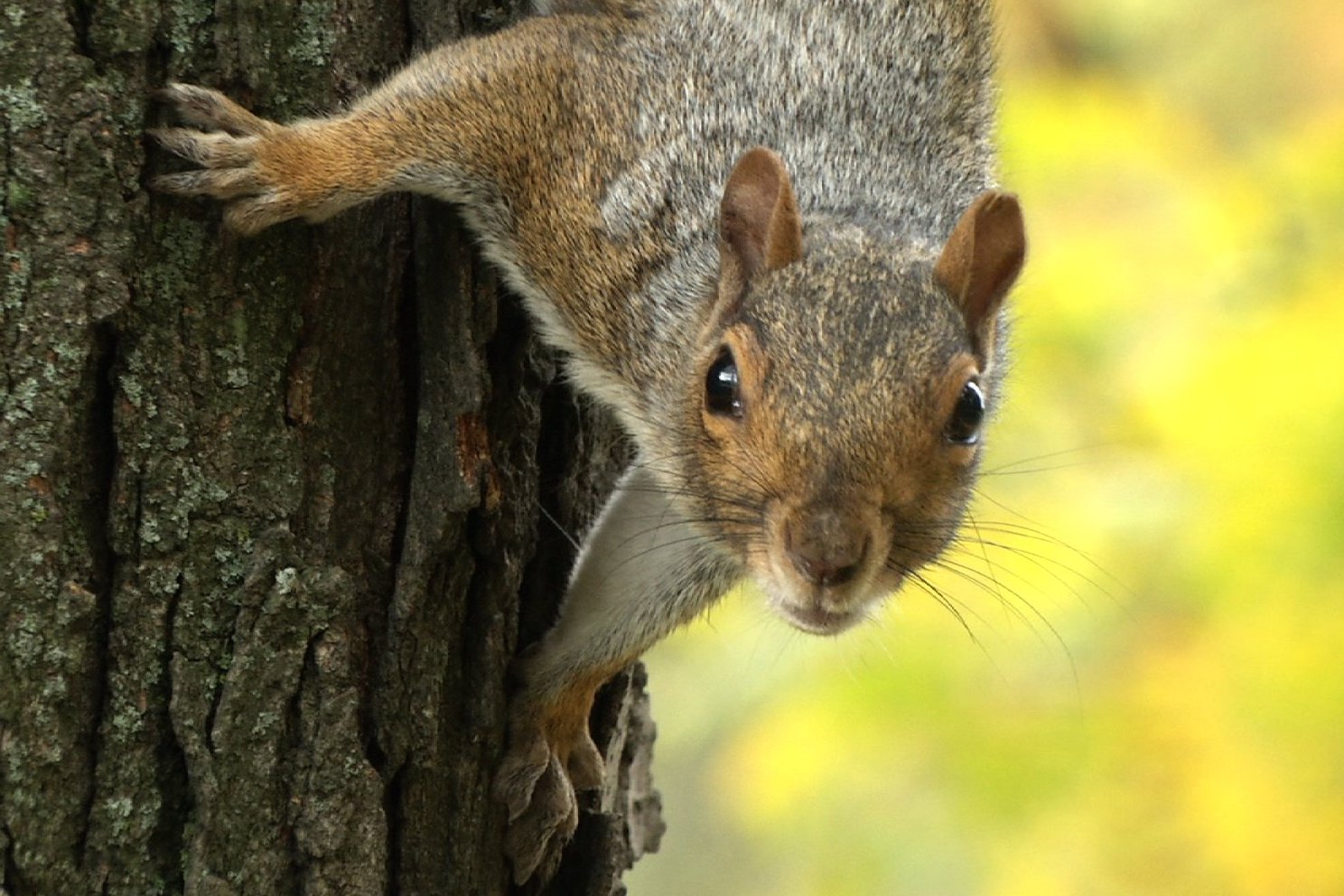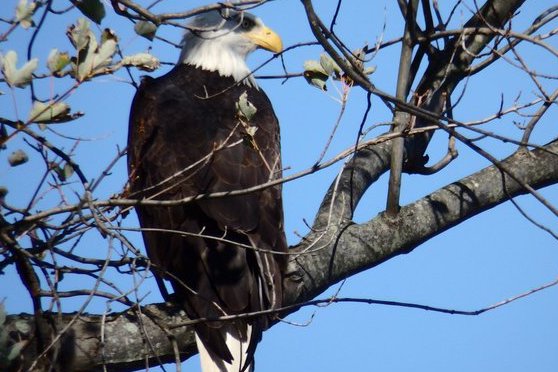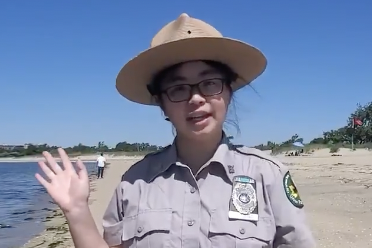Chipmunks in New York City's Parks
Although our eastern gray squirrels get most of the attention, eastern chipmunks are pretty common in our parks, too.
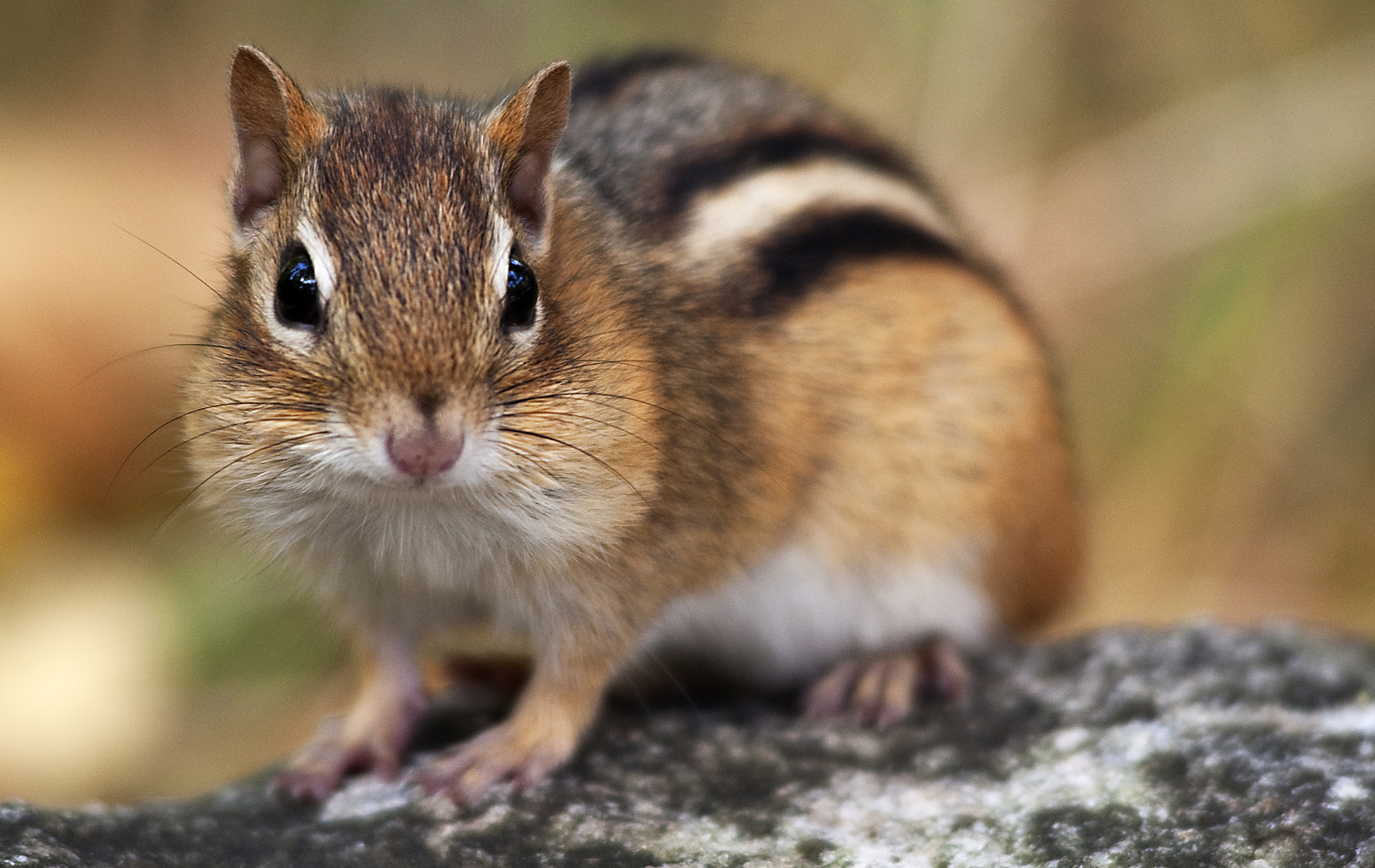
Chipmunks can be found scurrying along the ground looking for food — sometimes with their cheeks stuffed with seeds, nuts, and other snacks. As you explore our parks, keep your eyes peeled for these cute critters, especially in the fall when they gather food for winter.
Appearance
People sometimes confuse eastern chipmunks with eastern gray squirrels. Chipmunks are even occasionally mistaken for baby squirrels. While they are both members of the squirrel family, Sciuridae, chipmunks are a totally different species.
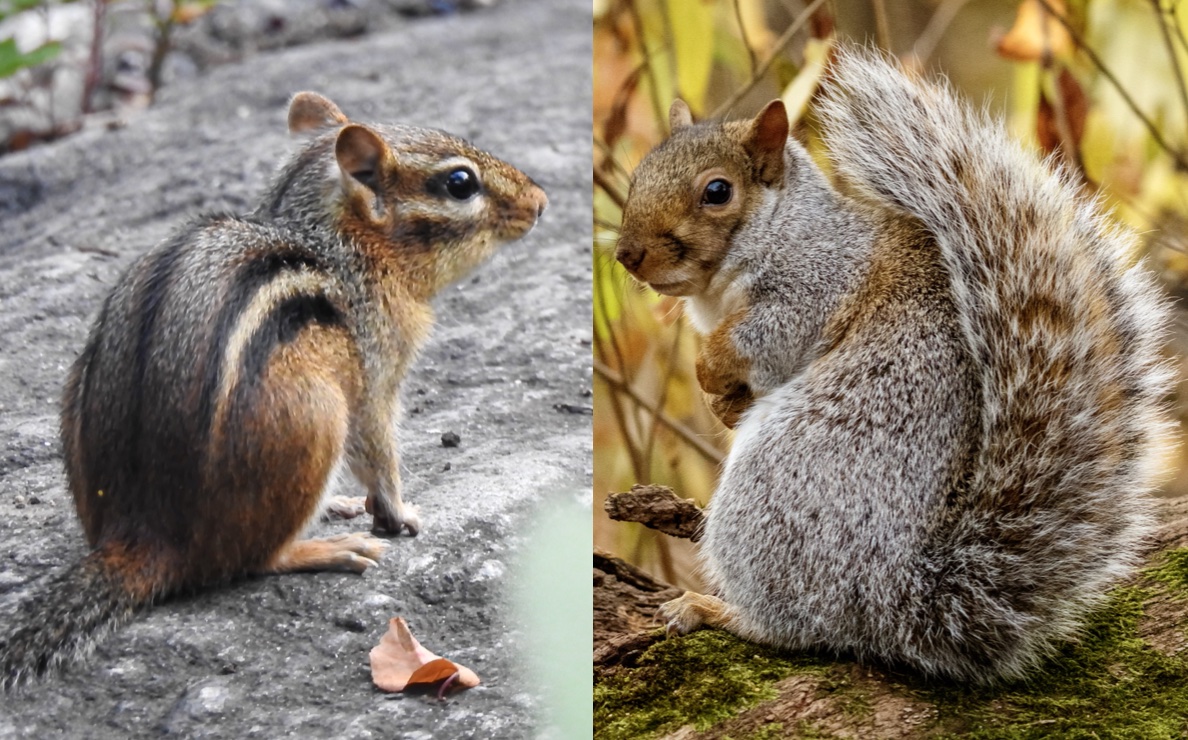
Eastern chipmunk (left) and an eastern gray squirrel (right)
The first key difference is their size. Squirrels' bodies are typically 9-12 inches long (excluding their tail). Chipmunks are less than half that length, and weigh just 4 ounces — that's lighter than a baseball! Chipmunks also have black, brown, or white stripes that run along their back. Their tails are shorter and usually much less fluffy than a squirrel's.
Behavior
Chipmunks are most active during the daytime. They do not hibernate but stay mostly underground during the colder months.
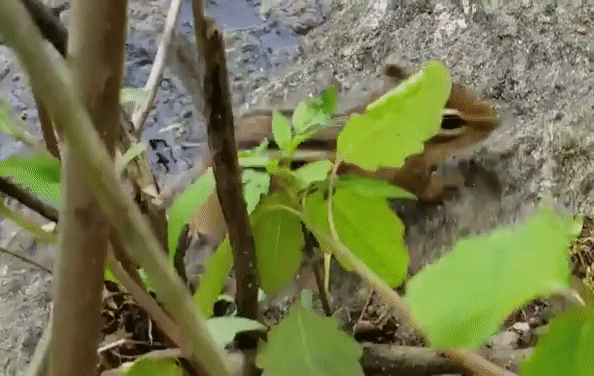
Foraging for food occurs mainly on the ground, but they can also climb. They prefer forested natural areas, as trees provide nuts and seeds and protection from predators, such as hawks.
Diet
Chipmunks use their cheeks to help them store food. They collect seeds, nuts, berries, and mushrooms to take back to their burrow. Chipmunks are perfectly capable of feeding themselves. Foraging for their own food is healthier than accepting human food handouts.
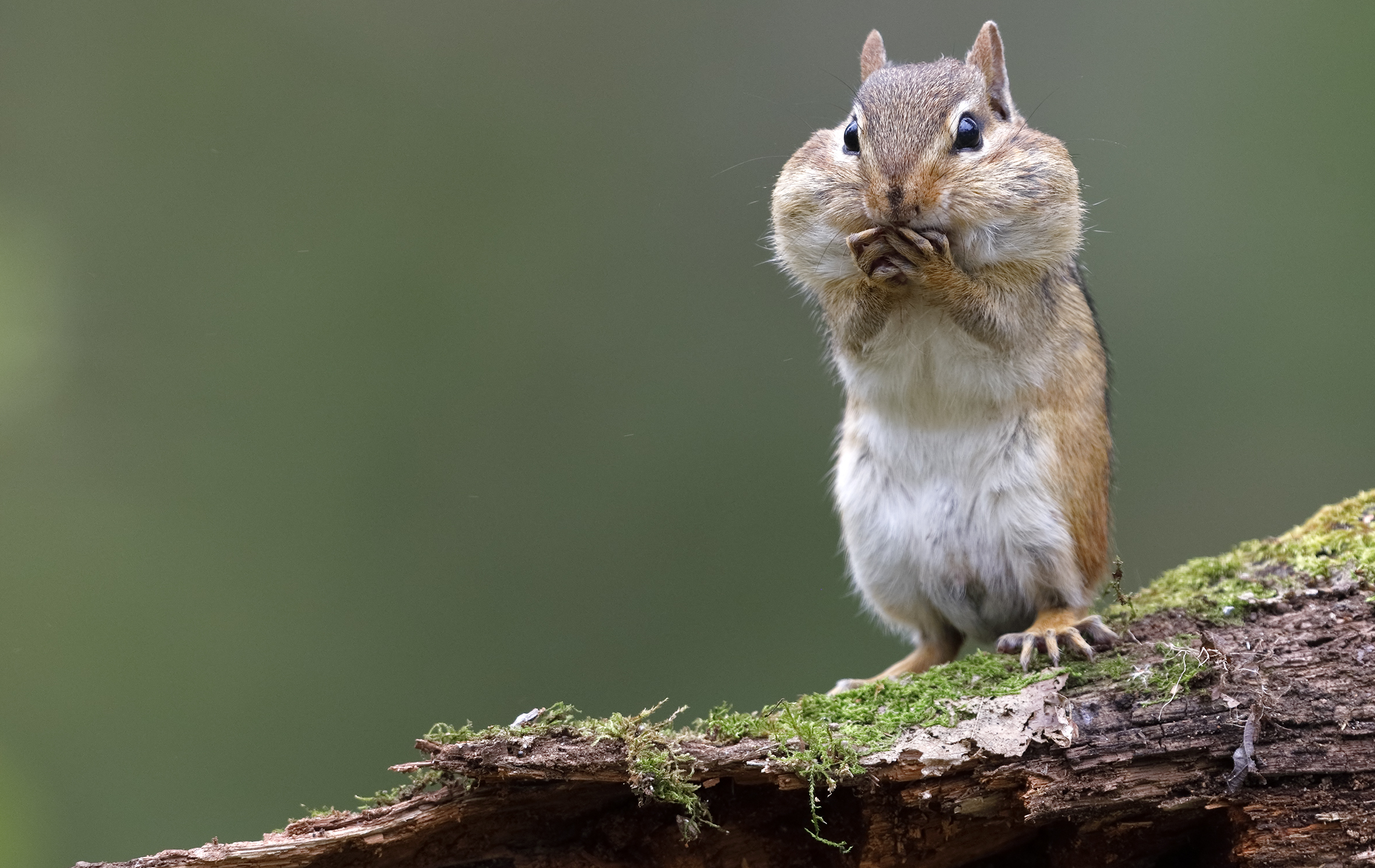
A chipmunk’s cheek pouch can actually stretch to be three times the size of its head! That’s very useful when they’re collecting food to store for the winter.
Habitat
Unlike their tree-dwelling cousins, chipmunks prefer to burrow underground. While the entrance to their burrows may look small, the burrows can extend up to three feet underground.

Chipmunks are always concerned about predators, so they choose places to burrow near natural cover, like rocks or logs. They will even carry the soil they dig up away from the burrow, so the location stays hidden.
Family Life
Chipmunks can have two litters a year — one in spring and one in midsummer.
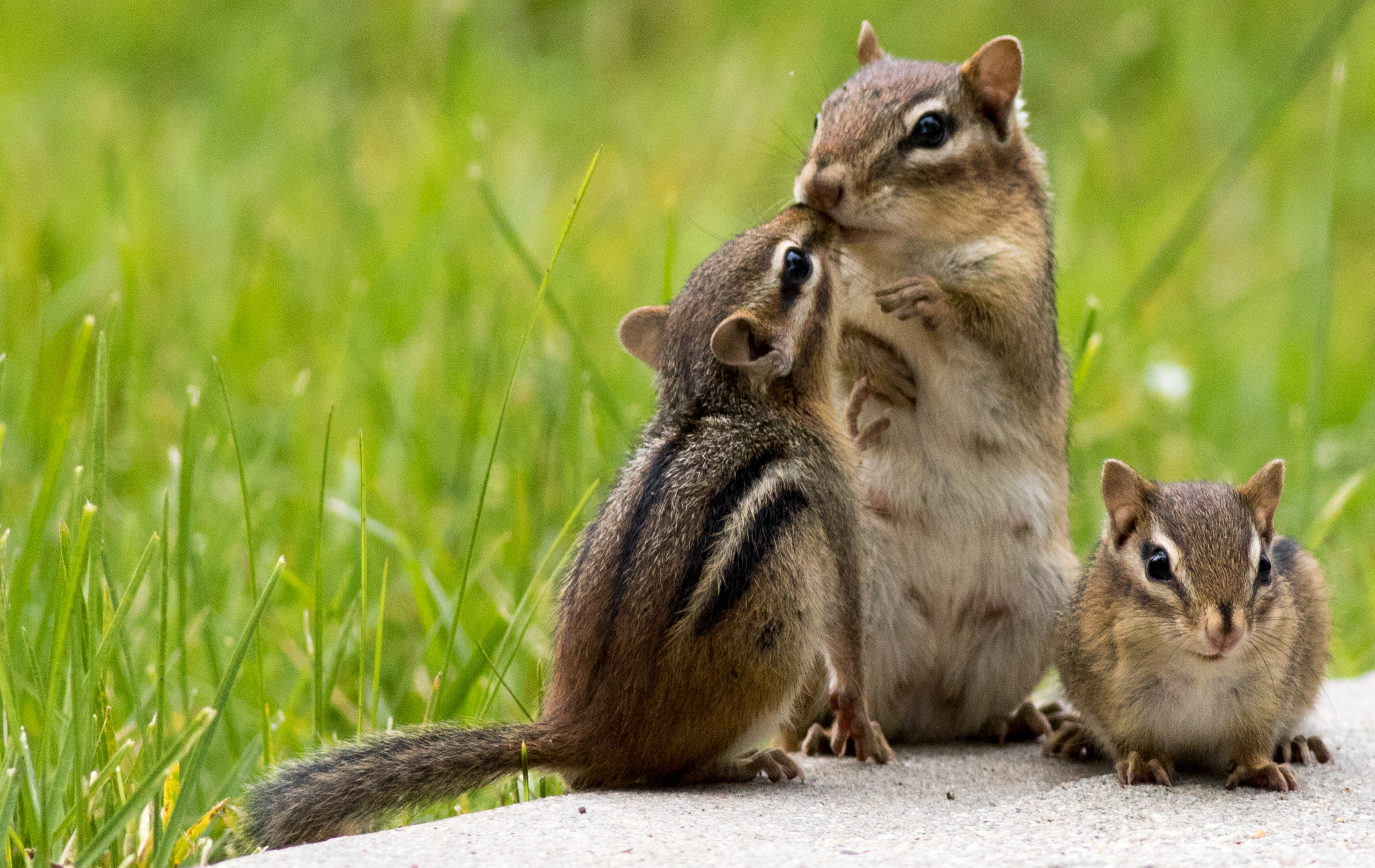
The female gestation period is about 35 days. The babies are born blind and hairless in their underground burrows. After young are weaned, females move to a different burrow and leave young in their natal burrow until they disperse. Young will begin to survive on their own at eight weeks.
Most eastern chipmunks survive for about two years in the wild.
Co-existing with Chipmunks
While chipmunks are cute and approachable, they can bite. Chipmunks are also afraid of dogs. Please keep your dog on a leash and do not allow your pets to chase any wildlife.
Explore Wildlife in New York City
Squirrels in New York City's Parks
Explore the life of the chipmunk's famous cousin — the eastern gray squirrel!
NYC Wildlife
Our parks are home to eagles, coyotes, red foxes, and many other wildlife that thrive in our city.
Wildlife Events
Join our Urban Park Rangers and friends as we venture into the parks for a chance to see wildlife while exploring their habitat.

